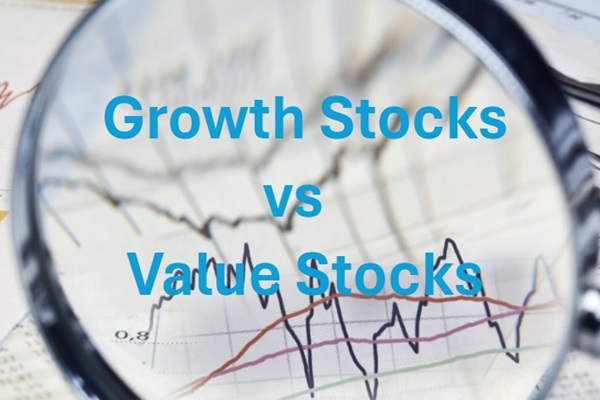Wandering Earth said that we live in this time is a word of money. This is not right, and it is not wrong. It is true that we have to earn money in life. And many people will choose to make money in the financial market, so speculation stocks buy bonds investment funds, head into the securities market that gentle embrace.

The Role and Evolution of the Stock Market
The stock market is a place where securities such as stocks and bonds are issued and traded. It is a general term for a variety of economic equity certificates, so in a broad sense it refers to the place where all securities are issued and traded, and in a narrow sense it is also the most active stock market.Its germ can be traced back to the 16th century in Western Europe, when France and Belgium have begun to buy and sell national bonds. But to the 18th century, joint-stock companies such as the emergence of spring, stocks and all kinds of bonds gradually widespread circulation, it is the basic formation.
It has three major elements, participants, tools and trading venues. If the securities market is compared to a supermarket, then the market participants such as securities issuers, intermediaries, investors, etc., respectively, like the supermarket suppliers, dealers and customers as a series of the entire market. In which the circulation of a variety of securities such as stocks, bonds and other trading tools, just like the supermarket goods. And the major stock exchanges as the main place of securities trading circulation, just like the supermarket where the turf.
Usually we will be divided into the issuance market and trading market according to its specific role. Issue market is also called the primary market is the company enterprise and other issuers to raise funds for the purpose of selling new securities to investors in accordance with the legal procedures formed by the market. And these issued securities trading circulation place is the trading market, also called the secondary market.
Issue market and trading market are interdependent, mutual constraints, is an inseparable whole. Issue market is the foundation and premise of the trading market, the trading market is the necessary conditions for the continuous expansion of securities issued. In addition, the trading price of the trading market restricts and influences the issuance price of securities, which is an important factor to be considered in the issuance of securities.
It is the product of the development of market economy to a certain stage, is to solve the contradiction between the supply and demand of capital and liquidity and the market. Its development and perfection provides an effective financing channel for capital demanders and a reliable investment object for capital suppliers. It realizes the docking between financing and investment by way of securities issuance and trading, and effectively solves the contradiction between the supply and demand of capital and the problem of capital structure adjustment.Through the purchase and sale of securities to guide the flow of capital in the market optimizes the allocation of resources, which in turn promotes social and economic growth.
In a developed market economy, it is an important part of the complete market system. It not only reflects and regulates the movement of monetary funds, but also has an important impact on the operation of the entire economy. On the whole, it has direct or indirect links with all financial sectors, and its position in the financial world is unshakeable.
Explanation of Securities Market Terms
|
Nouns
|
Explanation
|
|
the market for securities
|
Market for issuing and trading securities, like stocks and bonds. |
|
primary market
|
Hub for initial securities issuance, ensuring legal compliance. |
|
secondary market
|
The market where securities that have been issued are traded. |
|
issuer of securities
|
Primary market issuer for raising capital. |
|
stock exchange
|
Key market for trading securities, like the NYSE. |
|
Capital suppliers
|
Includes individual investors, institutional investors, and investment funds. |
|
Demand for capital
|
Entity meeting capital needs through security issuance. |
|
Securities Trading
|
Buying and selling securities activity. |
The Basic Functions of the Securities Market
Fund-raising Function: It is the function of raising funds for enterprises or government agencies through the issuance of securities such as stocks and bonds. Its existence makes it easy for enterprises or government agencies to raise funds through the issuance of securities to support their development and operation. This type of financing has a higher degree of transparency and marketization compared to the traditional bank loan method, which can better diversify risks and improve the efficiency of capital use.
Capital Pricing: It is the function of pricing securities such as stocks and bonds through factors such as market supply and demand and risk premium. Its existence allows investors to make investment decisions by judging the value of securities based on market prices. This pricing method has a higher degree of marketization and transparency compared to the traditional bank loan method, and can better reflect the market risk and cost of capital.
Capital Allocation: It is the function of allocating capital to the most efficient enterprises through the signaling effect of market prices. It allows investors to judge the value and performance of an enterprise based on market prices, thus allocating capital to the enterprise with the most potential for growth and return on investment. This allocation method is more market-oriented and transparent than the traditional bank loan method, and can better optimize the allocation of resources and improve the efficiency of capital use.
The performance of these functions enables enterprises or government agencies to raise funds conveniently, and investors to judge the value of securities and make investment decisions based on market prices, thus realizing the optimal allocation of funds and improving the efficiency of capital use.
Developments in the securities market
|
phase (of a process)
|
Description
|
|
Emerging Stage
|
16th-century France and Belgium traded small volumes of national bonds. |
|
Growth Stage
|
18th-century joint-stock companies spurred market growth. |
|
Globalization Stage
|
After the 20th century, global financial centers like NYSE emerged. |
|
Technological Innovation Stage
|
Tech, like blockchain, revolutionized securities trading. |
|
Regulatory Stage
|
Crises spur tighter regulations for investor protection and market stability. |
Which Markets are Included in the Securities Market
According to its role, it is mainly divided into primary market and secondary market. The primary market is the market for the issuance of securities, also known as the primary market or primary market, is the issuer of securities in order to expand operations, in accordance with the provisions of the law and the issuance process, the sale of new securities to investors in the market. The secondary market is the issued securities through the purchase and sale transactions to realize the circulation of the market, also known as the secondary market or secondary market.
According to whether the trading activity is fixed place is divided into tangible market and intangible market. Tangible market is also known as the on-market, refers to a fixed place of securities trading market, this market is organized, institutionalized market. The intangible market, also known as the over-the-counter market, refers to the securities trading market without a fixed place, and the trading activities of this market can be carried out by telephone, the Internet and other means.
According to its components, it is subdivided into stock market, bond market, fund market, and derivatives market.
The stock market is an important part of it. Stocks are securities issued by an enterprise and represent the holder's ownership of that enterprise. The stock market is an important channel for enterprises to raise funds and for investors to obtain investment returns, and it includes the main board market, the GEM market, and the SME market.
The Main Board market, also known as the First Board market, is the market with the highest listing standards, mainly consisting of the stocks of companies with the largest market capitalization in each country's market, with a large trading scale. The GEM market mainly serves high-growth micro and small enterprises and innovative enterprises. It is a market composed of stocks of companies whose research and development of new technologies or products are in the development stage, with relatively small trading scale but high growth potential. The SME market mainly serves the stocks of small and medium-sized listed companies and is similar to the main board market, but the difference lies in the fact that the listed companies in the SME market are smaller and the trading scale is also smaller, but it has certain growth potential.
The bond market is also an important part of it, which includes the treasury bond market, corporate bond market and financial bond market. Bonds are borrowing certificates issued by enterprises or government agencies, representing debtors' debt commitments to creditors. The bond market offers investors the opportunity to purchase bonds for a fixed interest income. The price of bonds also fluctuates in the market, but is less volatile than stocks.
The fund market, on the other hand, seeks to realize asset appreciation by pooling investors' capital and having the investments managed by professional fund managers. The derivatives market, on the other hand, includes the futures market and the options market, etc. The trading varieties in these markets are leveraged in nature and can magnify investment returns and risks.
Basic Laws and Regulations of the Securities Market
|
Laws and Regulations
|
Description
|
|
Securities Law
|
Regulates securities issuance, trading, and disclosure for market compliance. |
|
Stock Exchange Rules
|
Exchange rules govern fair and efficient securities trading. |
|
Investor Protection Law
|
A law ensuring integrity, disclosure, dispute resolution, and investor protection. |
|
Securities Trading Fee Law
|
A tax law applying to securities transactions. |
|
Anti-Money Laundering Law
|
A law to prevent money laundering and trace fund origins. |
|
Securities Trading Clearing Law
|
Defines secure procedures for settling securities transactions. |
Disclaimer:This material is for general information purposes only and is not intended as(and should not be considered to be)financial,investment or other advice on which reliance should be placed.No opinion given in the material constitutes a recommendation by EBC or the author that any particular investment,security,transaction or investment strategy is suitable for any specific person.







